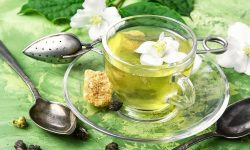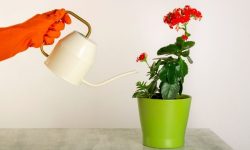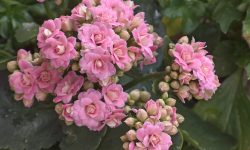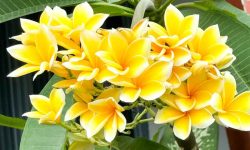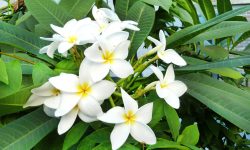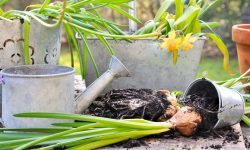Bee balm, scientifically known as Monarda, is a vibrant flowering plant native to North America. Its bright red, pink, purple, or white blooms attract bees, butterflies, and hummingbirds, making it a favorite in both ornamental and pollinator-friendly gardens. Knowing when bee balm blooms helps gardeners plan colorful landscapes and ensure continuous nectar sources throughout the season.
Blooming usually begins in mid to late summer and can continue into early fall with proper care. By understanding bloom timing, selecting healthy plants, and maintaining ideal growing conditions, you can enjoy abundant, long-lasting flowers. This guide provides expert tips to help your bee balm thrive and create a stunning, lively garden.
When Does Bee Balm Bloom?
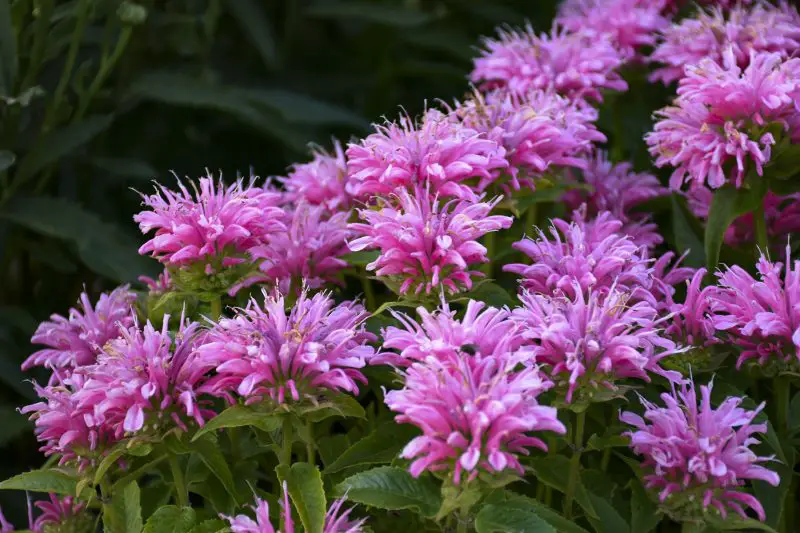
Bee balm generally blooms from mid-summer to early fall, typically starting in July and continuing through September. The exact timing depends on the variety, local climate, and growing conditions. Scarlet bee balm (Monarda didyma) often begins flowering earlier, while wild bergamot (Monarda fistulosa) may bloom slightly later. Blooming starts once the plant reaches maturity, usually in its second growing season, though well-established perennials can produce flowers in their first year under optimal conditions.
Environmental factors significantly influence the bloom schedule. Full sun exposure encourages earlier and more abundant flowering, while shaded locations may delay blooms. Soil quality also plays a role, with fertile, well-drained soil promoting healthy root development and vibrant flowers. Temperature fluctuations, rainfall, and humidity levels can affect flower opening and longevity. Regular monitoring and adjusting care routines ensure your plants bloom at the right time and maintain their visual appeal throughout the season.
Understanding bloom patterns is essential for gardeners aiming to attract pollinators. Flowers provide nectar and pollen when they bloom, supporting bees, butterflies, and hummingbirds. By selecting complementary bee balm varieties with staggered bloom times, gardeners can create continuous color and a consistent food source for pollinators. This approach not only enhances garden aesthetics but also supports local ecosystems. Observing plants over several seasons helps predict blooming periods and plan for peak flowering moments, ensuring your garden remains lively and vibrant.
Factors Affecting Bloom Time
Sunlight and Temperature
Sunlight plays a crucial role in determining when bee balm blooms. Plants grown in full sun typically flower earlier and produce more abundant blooms compared to those in shaded areas. Insufficient light can result in delayed flowering, weaker stems, and fewer flowers. Gardeners should aim for at least six hours of direct sunlight daily to encourage vibrant, long-lasting blossoms. Morning sun is particularly beneficial, as it helps dry dew on the leaves and reduces the risk of fungal diseases.
Temperature also affects bloom timing and flower quality. Warm daytime temperatures stimulate growth and promote bright, vivid colors, while cooler nights help maintain flower longevity. Sudden temperature swings or prolonged heat waves can stress the plant, slowing flowering or causing blooms to fade quickly. Monitoring local climate conditions and adjusting watering and soil management accordingly ensures that bee balm produces flowers at the expected time.
Soil Quality and Moisture
Healthy, well-drained soil is essential for strong root development and timely blooms. Fertile soil enriched with organic matter provides the nutrients bee balm needs to grow vigorous stems and vibrant flowers. Heavy clay or compacted soil can delay flowering and increase susceptibility to root rot. Gardeners should regularly amend the soil with compost or mulch to improve texture and retain adequate moisture without waterlogging.
Moisture management is equally important. Bee balm thrives in consistently moist soil, but overwatering or poorly drained areas can lead to root diseases, reducing flower production. Checking soil moisture regularly and adjusting irrigation schedules helps maintain optimal growth. Well-balanced watering, combined with good soil conditions, encourages healthy buds and abundant blooms throughout the flowering season, ensuring your garden remains colorful and lively.
Plant Variety
The variety of bee balm directly influences bloom timing and flower characteristics. Scarlet bee balm (Monarda didyma) typically blooms early in mid-summer, while wild bergamot (Monarda fistulosa) may flower slightly later. Gardeners can select different varieties to stagger bloom times, ensuring continuous color and nectar supply for pollinators throughout the season. Choosing varieties with contrasting colors and heights also enhances visual interest in the garden.
Understanding the growth habits of each variety is key for planning your planting scheme. Some bee balm types are more tolerant of heat or shade, while others prefer cooler, sunnier spots. Selecting complementary varieties based on local climate, soil, and garden design helps maintain long-lasting blooms. Careful variety selection allows gardeners to create a vibrant, dynamic display while supporting pollinators with a consistent nectar source.
Preparing Your Garden for Bee Balm
Preparing your garden for bee balm begins with selecting an ideal location. Bee balm thrives in full sun, requiring at least six hours of direct sunlight daily for abundant blooms. Choose a spot with well-drained soil to prevent waterlogging, which can lead to root rot and fungal diseases. Amending the soil with organic compost or aged manure improves fertility and texture, encouraging strong root development and vigorous flowering. Adequate spacing between plants ensures good air circulation, reducing the risk of powdery mildew, a common issue for dense bee balm clusters.
Proper garden preparation also involves planning companion plants and garden layout. Bee balm pairs well with other sun-loving, pollinator-friendly flowers such as purple coneflowers, black-eyed Susans, and salvias. Planting in groups rather than isolated individuals attracts more bees, butterflies, and hummingbirds, supporting pollination. Consider staggered bloom times when selecting companions to maintain continuous color and nectar availability throughout the growing season. Mulching around the base of plants helps retain soil moisture, suppress weeds, and regulate soil temperature, providing optimal conditions for growth and flowering.
Finally, attention to soil pH and nutrient levels is crucial. Bee balm prefers slightly acidic to neutral soil, generally within a pH range of 6.0 to 7.0. Testing soil and making necessary adjustments ensures plants can absorb nutrients efficiently. Regular monitoring of soil moisture and fertility allows for timely interventions, such as supplemental watering or fertilization. By preparing your garden thoughtfully and providing ideal growing conditions, you set the foundation for vibrant, long-lasting bee balm blooms that enhance both the visual appeal and ecological value of your garden.
Selecting Healthy Plants
Selecting healthy bee balm plants is essential for ensuring vibrant blooms and a thriving garden. Look for plants with strong, upright stems and lush green foliage. Avoid specimens with yellowing leaves, spots, or signs of pest damage, as these may struggle to establish and produce flowers. Healthy roots are equally important; choose plants with firm, well-developed root systems that are free from rot or dryness. Starting with vigorous plants increases the likelihood of abundant flowering during the growing season.
When buying bee balm from nurseries or garden centers, pay attention to the variety and labeled bloom times. Scarlet bee balm typically blooms earlier in the season, while wild bergamot flowers later, allowing you to plan a staggered display. Consider mature seedlings or divisions, which establish quickly and provide faster flowering compared to seeds. Proper labeling and selecting reputable sources ensure genetic consistency, plant health, and predictable bloom patterns.
Once plants are selected, prepare them for planting by acclimating them to outdoor conditions. Gradually expose indoor or greenhouse-grown plants to sunlight and temperature variations over a week. Planting at the correct depth in enriched, well-drained soil promotes rapid root growth and strong stems. Water thoroughly after planting and apply a light layer of mulch to retain soil moisture. By carefully choosing and preparing healthy bee balm, you create the foundation for stunning, long-lasting blooms that attract pollinators and enhance your garden’s beauty.
Caring for Bee Balm to Encourage Bloom
Proper care is essential to ensure bee balm produces vibrant and long-lasting blooms. Regular watering supports healthy growth, but overwatering can cause root rot. The soil should remain consistently moist, especially during dry periods, while allowing excess water to drain. Deadheading spent flowers encourages the plant to produce new blooms, extending the flowering season. Removing old or faded blooms also helps maintain a tidy appearance and directs the plant’s energy toward fresh growth.
Fertilization plays an important role in supporting bee balm’s flowering potential. Applying a balanced, slow-release fertilizer in early spring provides essential nutrients for strong stems and healthy leaves. Avoid excessive nitrogen, which can promote leafy growth at the expense of flowers. In addition, pruning older stems in late winter or early spring rejuvenates the plant and stimulates vigorous flowering. Maintaining proper soil fertility and pruning routines ensures the plant reaches its full bloom potential each season.
Monitoring for pests and diseases is crucial to protect flower quality. Common issues include aphids, spider mites, and powdery mildew. Inspect plants regularly and use organic sprays or physical removal to manage infestations. Ensuring good air circulation and watering at the base helps prevent fungal problems. Healthy, pest-free bee balm flowers attract pollinators such as bees, butterflies, and hummingbirds. By combining proper watering, fertilization, pruning, and pest management, gardeners can enjoy a stunning display of blooms throughout the summer and into early fall.
Extending Bloom Season
Extending the bloom season of bee balm requires careful planning and consistent maintenance. One effective method is to plant a combination of early, mid, and late-blooming varieties. This approach ensures that as one variety finishes flowering, another begins, providing continuous color and nectar for pollinators. Gardeners should also consider staggering planting times, which can further prolong the flowering period and maintain a vibrant display throughout the growing season.
Deadheading is another important technique to encourage extended blooming. Removing spent flowers prevents the plant from diverting energy into seed production, allowing it to focus on producing new buds. Regular inspection and removal of faded blooms throughout the summer keeps the plant vigorous and promotes repeated flowering. This practice not only improves visual appeal but also enhances the garden’s ecological value by providing continuous food for bees, butterflies, and hummingbirds.
Dividing mature bee balm plants every few years is also beneficial for sustaining abundant blooms. Overcrowded or aging clumps may produce fewer flowers and become more susceptible to diseases such as powdery mildew. Dividing and replanting sections rejuvenates the plant, stimulates fresh growth, and encourages more prolific flowering. Combined with proper watering, fertilization, and pest management, these strategies help gardeners enjoy a longer-lasting, colorful display, making bee balm a reliable and attractive choice for pollinator-friendly gardens.
Companion Planting and Pollinators
Companion planting enhances both the visual appeal and ecological value of a bee balm garden. Bee balm thrives alongside other sun-loving, pollinator-friendly plants. Flowers such as purple coneflowers, black-eyed Susans, and salvias complement bee balm by providing overlapping bloom periods. This creates a continuous source of nectar and pollen for bees, butterflies, and hummingbirds. Planting in clusters rather than isolated individuals further attracts pollinators, improving pollination rates and garden productivity.
Choosing companion plants with contrasting colors and textures also elevates garden aesthetics. Taller flowers placed behind shorter bee balm plants create depth and visual interest, while varying bloom shapes appeal to different pollinator species. Aromatic herbs like thyme and basil can be interspersed among bee balm to enhance fragrance and deter pests naturally. Thoughtful garden design ensures that each plant supports its neighbors, encouraging healthy growth, extended bloom periods, and a dynamic, lively garden environment.
Additionally, companion planting contributes to pest management and overall plant health. Dense planting can reduce the spread of diseases by promoting air circulation around the base of the plants. Pollinator-friendly companions attract beneficial insects that prey on harmful pests, creating a balanced ecosystem. By combining strategic plant selection with careful arrangement, gardeners can maximize both beauty and ecological function. Properly planned companion planting ensures bee balm and its neighbors flourish, resulting in vibrant blooms, active pollinators, and a thriving, harmonious garden.
Common Problems and Solutions
Powdery Mildew
Powdery mildew is a frequent issue for bee balm, especially in humid climates or when air circulation is limited. It appears as a white, powdery coating on leaves and stems, often starting on lower foliage and spreading upward. Affected plants may experience reduced photosynthesis, weakened stems, and smaller or fewer blooms. In severe cases, leaves can drop prematurely, compromising the plant’s overall health. Early detection is crucial to prevent the fungus from spreading to surrounding plants and reducing garden aesthetics.
Managing powdery mildew begins with proper cultural practices. Prune affected leaves and stems to remove the fungus and improve airflow. Space plants adequately to prevent overcrowding, and water at the base rather than overhead to keep foliage dry. Organic fungicides, such as neem oil or baking soda solutions, can help control outbreaks safely. Regularly removing plant debris in the fall reduces fungal spores for the next season. Healthy, well-cared-for bee balm is far less susceptible to powdery mildew, ensuring abundant, long-lasting blooms.
Aphids and Other Pests
Aphids, spider mites, and leafhoppers can damage bee balm by feeding on sap and weakening the plant. Infested leaves may curl, yellow, or appear distorted, while severe infestations can stunt growth and reduce flower production. Pests may also transmit diseases, threatening not only bee balm but nearby plants. Early identification and intervention are critical to maintaining plant health and vibrant blooms throughout the season.
Controlling pests begins with regular inspection and physical removal of affected leaves or insects. Organic solutions like insecticidal soap or neem oil provide effective control while remaining safe for pollinators. Introducing beneficial insects such as ladybugs or lacewings can naturally reduce pest populations. Maintaining healthy plants through proper watering, pruning, and fertilization also strengthens resistance against infestations, helping bee balm thrive and maintain continuous flowering in your garden.
Root Rot and Overwatering
Root rot occurs when bee balm is exposed to poorly drained soil or excessive watering. This fungal disease causes roots to decay, leading to wilting, yellowing leaves, and weakened stems. Affected plants produce fewer flowers, and in severe cases, the plant may die. Root rot is more common in clay-heavy or compacted soils that retain too much moisture. Detecting problems early is key to salvaging plants and preventing the spread to nearby specimens.
Preventing root rot requires attention to soil and watering practices. Ensure soil drains well by amending with organic compost and avoiding low-lying, waterlogged areas. Water consistently but do not saturate the soil, and consider raised beds in poorly draining gardens. Dividing mature plants every few years promotes healthy root growth and reduces overcrowding. With proper soil management and careful watering, bee balm can grow vigorously and produce abundant blooms throughout the summer and early fall.
Harvesting and Using Bee Balm
Harvesting bee balm at the right time ensures maximum flavor, fragrance, and aesthetic value. Flowers should be picked when they are fully open, as this is when their color is most vibrant and their nectar content is highest. Leaves can also be harvested while green and tender, offering aromatic qualities ideal for culinary and herbal uses. Harvesting in the morning, after dew has dried but before the heat of the day, preserves essential oils and flavor.
Bee balm is highly versatile once harvested. The flowers and leaves can be used fresh in teas, infusions, or salads, adding both color and flavor. Drying the plant preserves its properties for future use. Hang stems upside down in a cool, dry, and dark area until completely dry, or use a low-temperature dehydrator. Once dried, store in airtight containers away from direct sunlight to maintain fragrance and potency.
In addition to culinary uses, bee balm offers decorative and medicinal benefits. Fresh or dried blooms can be added to floral arrangements, wreaths, or potpourri for visual appeal and natural scent. Traditional herbal remedies utilize bee balm to soothe digestive issues, mild colds, and minor skin irritations. By carefully harvesting and storing bee balm, gardeners can enjoy both its beauty in the garden and its functional uses throughout the year, making it a valuable and multifunctional addition to any home landscape.
Propagation Methods for Bee Balm
Propagation is an effective way to expand your garden and ensure continuous blooms. Bee balm can be propagated through seeds, division, or stem cuttings. Seeds are typically started indoors 6–8 weeks before the last frost, then transplanted outdoors once the risk of frost passes. Dividing mature plants every 2–3 years rejuvenates older clumps, prevents overcrowding, and encourages more vigorous flowering.
Stem cuttings offer a faster method for propagation. Healthy shoots are cut, ideally 4–6 inches long, and placed in moist soil or water until roots develop. Using rooting hormone can increase success rates and promote faster growth. Propagating allows gardeners to preserve preferred varieties and control bloom timing, helping maintain a vibrant and continuous floral display.
Propagation also supports overall plant health. Removing older stems and dividing overgrown clumps reduces disease risk and encourages fresh, strong growth. It enables gardeners to expand plantings into different areas, creating a more dynamic garden design. By practicing proper propagation techniques, you ensure bee balm thrives, producing abundant flowers that attract pollinators and enhance the beauty of your garden year after year.
Seasonal Maintenance Tips
Early Spring Care
Early spring is a critical time to prepare bee balm for a productive growing season. Begin by pruning old, dead, or damaged stems from the previous year. Removing these stems encourages the plant to focus energy on fresh, healthy growth. It also reduces the risk of fungal infections and pest infestations that can overwinter in decaying plant material. Cleaning up fallen leaves and debris around the base further prevents diseases and provides a clean environment for new shoots to emerge.
Fertilizing during early spring supports robust root and stem development. A balanced, slow-release fertilizer or well-aged compost enriches the soil with essential nutrients. Mulching around the base retains moisture, regulates soil temperature, and suppresses weeds that could compete with young growth. Ensuring these steps are completed in early spring lays a strong foundation for bee balm to produce vibrant, abundant blooms throughout the summer. Careful early-season attention maximizes plant health and bloom potential for the entire growing season.
Summer Care
During the summer, consistent care ensures bee balm maintains healthy growth and abundant flowering. Deep watering at the base keeps the soil evenly moist without saturating it, while avoiding overhead watering reduces the risk of powdery mildew. Deadheading spent flowers encourages the plant to produce additional blooms, extending the flowering period and maintaining a vibrant display in the garden. Regular monitoring for pests, such as aphids, spider mites, and leafhoppers, allows early intervention with organic sprays or natural predators.
Proper spacing and pruning during summer also improve air circulation, helping to prevent fungal diseases in hot and humid conditions. Light fertilization may be necessary to maintain nutrient levels, but excessive nitrogen should be avoided to prevent overly leafy growth at the expense of blooms. With careful watering, deadheading, pest management, and pruning, bee balm remains strong, healthy, and visually stunning, attracting pollinators and enhancing the garden’s overall appeal.
Fall and Winter Preparation
Preparing bee balm for fall and winter ensures the plant survives dormancy and blooms vigorously the following season. After the first frost, cut back remaining stems to reduce pest and fungal problems during the cold months. Remove plant debris from the garden bed to prevent overwintering of diseases. Dividing overcrowded clumps rejuvenates growth, improves airflow, and allows space for healthier roots to expand.
Mulching around the base protects the roots from harsh winter temperatures and helps retain soil moisture during dormant periods. Water sparingly during winter to avoid waterlogged soil, which can cause root rot. These steps ensure that bee balm emerges in early spring healthy and ready for strong growth. Proper fall and winter preparation maximizes bloom potential, supports pollinator activity, and maintains a vibrant garden year after year.
Attracting Pollinators with Bee Balm
Bee balm is highly effective at attracting pollinators such as bees, butterflies, and hummingbirds. Its brightly colored, tubular flowers provide abundant nectar, supporting the local ecosystem and enhancing garden biodiversity. Planting bee balm in clusters increases visibility and encourages frequent visits from pollinators, which improves overall garden health.
Combining bee balm with other pollinator-friendly plants extends the nectar supply throughout the season. Companion flowers like coneflowers, black-eyed Susans, and salvias provide staggered bloom times, ensuring continuous food sources. Gardeners should avoid chemical pesticides that can harm pollinators, focusing instead on organic or natural control methods to maintain a safe environment for beneficial insects.
Strategic placement near vegetable, fruit, or herb gardens can enhance pollination and improve crop yields. Creating a pollinator-friendly habitat with bee balm benefits both ornamental and edible plants, while simultaneously providing stunning color and fragrance. By attracting pollinators and supporting biodiversity, bee balm becomes a vital component of a healthy, sustainable, and visually appealing garden.
FAQ About When Bee Balm Bloom
When does bee balm typically start blooming?
Bee balm usually begins blooming in mid-summer, around July, and continues into early fall. Timing varies by variety, climate, and care. Scarlet bee balm blooms earlier, while wild bergamot flowers later. Adequate sunlight, well-drained soil, and proper maintenance help ensure consistent and abundant blooms throughout the season.
How can I extend the bloom season of bee balm?
To extend flowering, plant early, mid, and late-blooming varieties for continuous color. Deadheading spent flowers encourages new blooms. Dividing overcrowded plants every few years rejuvenates growth. Maintaining proper soil fertility, consistent watering, and correct spacing ensures longer bloom periods and healthier, more vibrant bee balm plants.
What are common pests and diseases affecting bee balm?
Powdery mildew, aphids, spider mites, and leafhoppers commonly affect bee balm. Powdery mildew appears as a white coating on leaves, while sap-feeding pests weaken growth. Regular inspection, pruning infected foliage, organic sprays, and beneficial insects like ladybugs help control these problems and maintain strong, healthy flowering plants.
Can bee balm be used for culinary or medicinal purposes?
Yes, both flowers and leaves are edible and aromatic. Fresh leaves and blooms enhance teas, salads, and garnishes. Dried bee balm retains fragrance for infusions or potpourri. Traditionally, it has been used to relieve digestive discomfort, mild colds, and minor skin irritations, making it a versatile and functional plant in the garden.
How should I prepare the garden for optimal bee balm growth?
Select a sunny spot with well-drained, fertile soil. Space plants for good air circulation to prevent fungal diseases. Amend soil with compost, mulch around plants, and include companion flowers to attract pollinators. Proper preparation promotes strong roots, vigorous growth, and long-lasting, vibrant blooms throughout the season.
Conclusion
Bee balm is a versatile, vibrant addition to any garden, offering stunning blooms and attracting pollinators. By understanding its bloom times, selecting healthy plants, and following seasonal care routines, gardeners can ensure long-lasting, colorful displays. Proper propagation, pest management, and companion planting further enhance growth and flowering. From early spring pruning to fall preparation, every step contributes to stronger, healthier plants. With careful attention and thoughtful planning, bee balm thrives year after year, providing beauty, fragrance, and ecological benefits. This makes it an essential choice for creating a lively, pollinator-friendly garden.

